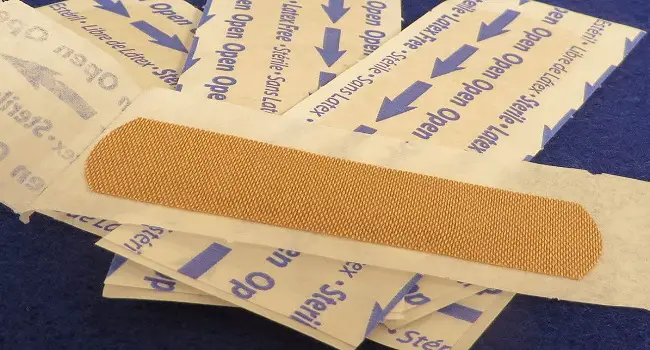Do Waterproof Bandages Work? Some Do, Most Don’t
Finding the right waterproof bandage to keep out water and germs is not an easy task. There are plenty of waterproof bandages available on the market — unlike waterproof contact lenses.
However, finding one that really works requires time and many trial and error attempts.
The whole process of finding a waterproof bandage that is actually waterproof may drive many people crazy. There are many products claiming they shield out water and germs but very few actually deliver what they promise.
Are waterproof bandages actually waterproof?
Waterproof bandages labelled as such are effective at keeping your skin dry when properly applied. They provide a seal around the pad that won’t soak water from the outside protecting the wound area.
After being continuously exposed to water for more than one hour, waterproof bandages will eventually lose their waterproofing ability. When that happens, you need to remove the old bandage and apply a new one.
Waterproof bandages stay on longer than regular band aid. They allow you to take care of your daily tasks without worrying too much about your bandages falling off. You can apply the first waterproof band aid in the morning and the second one in the evening. Of course, if the bandage loses its waterproofing capabilities, you need to remove it as soon as possible.
Always consult your doctor before applying waterproof bandages on large wounds.
How to apply waterproof bandages
Before you apply a bandage, here are some tips and tricks you should use in order to make sure it properly sticks to your skin.
- First, clean the affected area with rubbing alcohol to remove skin oil.
- Let it dry but don’t use any pieces of cloth to speed up the process. Some cloth fibers may remain on your skin. This may prevent the bandages from securely sticking to your skin.
- Apply the bandage from one end to another carefully pressing it on the skin.
- Gently press the whole surface of the bandage to make sure it stuck properly. But don’t press to hard to avoid making the wound worse.
Replace your bandages if they get wet
In order to avoid any issues, you should replace your bandages as soon as they get wet. Then carefully wash your wounds with soap and water, let your skin dry and apply a new bandage.
Now that you know not all waterproof bandages are actually water resistant, let’s see what are the best products available on the market. The following list is based on my personal experience and that of my fellow outdoor friends.
What waterproof bandages should I use?
1. Nexcare waterproof clear bandages

You can use these bandages for swimming, gardening or water sports. They stick really well so you don’t have to worry about your bandage budging or falling off when washing your hands.
You won’t get any rash or itches thanks to the breathable material they are made of.
Use Nexcare waterproof bandages for:
- Minor scrapes
- Blisters
- Finger cuts
- Sore hangnails
2. Dr. Frederick’s Blister Bandages

If we’re talking blisters, Dr. Frederick’s Blister Bandages are the perfect choice for you. They protect and treat the affected area but you can also use them to actually prevent blisters.
Keep in mind these are band aids for blisters, not scrapes or cuts.
FAQ: Learn more about waterproof bandages
Can you swim with a waterproof bandage?
Having a band aid on your skin does not prevent you from swimming as long the bandage is waterproof. Make sure the band aid and the wound dressing is secured. Water and body movements may cause the bandage to slip off.
How do you remove a waterproof bandage painlessly?
Waterproof bandages often feel like they’ve literally glued to your skin. Removing them may sometimes become quite tricky.
In order to remove waterproof bandages without causing too much pain, take a cotton ball and soak it in coconut oil. Then place it on the bandage and gently press it down for a few minutes. The band aid should come off easily now.
Another solution is to use a hair dryer to blow dry the bandage on high heat.
If you go with the two waterproof band aid brands recommended above, you don’t need to worry about any weird grimacing when removing them. For example, Nexcare bandages are designed for easy removal. Gently stretch them away from your wound and that’s it.
I hope this guide helped you to decide what waterproof bandages to buy next time you need one.
If you’ve got additional tips on waterproof band aids, feel free to use the comment section below.
Learn more:
References:
- FREQUENTLY ASKED QUESTIONS, Nexcare.
Last updated in October 2021 to add additional information.
